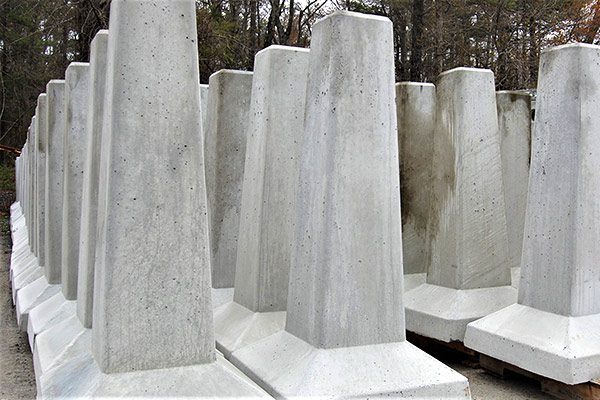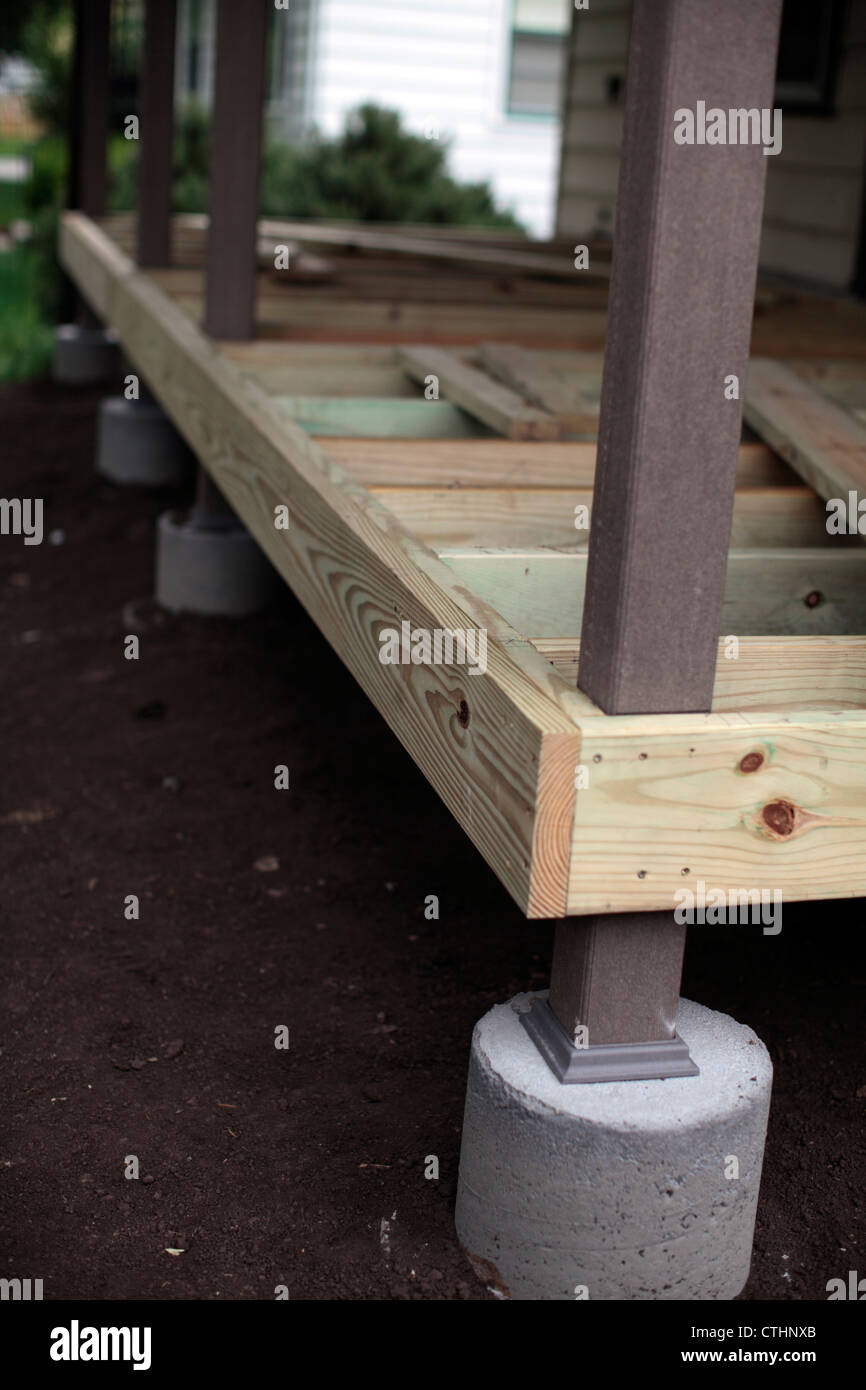Engineered for Success: The Scientific Research Behind Robust and Durable Deck Footings
Engineered for Success: The Scientific Research Behind Robust and Durable Deck Footings
Blog Article
Choosing the Right Deck Footings for Stability and Longevity
When it comes to constructing a deck, among one of the most crucial decisions you will make is picking the ideal grounds for stability and toughness. The durability and safety of your deck depend greatly on the sort of footings you pick, as they supply the crucial assistance and stability to stand up to the test of time. With a myriad of alternatives available, it can be frustrating to figure out which footings are best fit for your specific demands. In this conversation, we will certainly check out the numerous kinds of deck grounds, think about the crucial elements to weigh when choosing, and dig right into the advantages and disadvantages of various alternatives. By the end, you will have a more clear understanding of the choices available and be better furnished to make an educated decision for your deck job.
Types of Deck Footings
These grounds consist of a round hole filled with concrete, which offers a strong foundation for the deck blog posts. Concrete pier footings are relatively easy to install and supply outstanding stability, making them a prominent option for numerous deck projects.
Another sort of footing is the helical heap ground. Helical stacks are steel shafts with helical plates connected to them. These footings are set up by screwing them into the ground, which creates a protected foundation for the deck. Helical pile footings are suitable for locations with difficult soil conditions, as they can be mounted in virtually any type of type of soil. They additionally permit for simple change and leveling of the deck if needed.
Conversely, some building contractors decide for precast concrete footings. These grounds are made of durable concrete and come in different shapes and dimensions to fit various deck layouts. Precast concrete footings are convenient to set up and provide a secure base for the deck framework.
Ultimately, another alternative is the post-in-anchor footing system. This kind of footing includes driving a metal anchor right into the ground and connecting it to the deck post. It uses flexibility in terms of placing the deck messages and is ideal for decks with lightweight structures.
When picking the ideal kind of deck ground, it is important to think about elements such as dirt conditions, deck tons, and neighborhood building regulations (Deck Footings). Consulting with a specialist specialist or architectural designer can help make sure the appropriate ground is picked for a risk-free and stable deck
Factors to Think About When Selecting Footings
When selecting the ideal grounds for a deck, it is vital to very carefully take into consideration different elements such as dirt problems, deck lots, and adherence to local building codes. These elements play a considerable duty in guaranteeing the stability and toughness of the deck framework.
The type of dirt on which the deck will certainly be constructed determines the type of footings needed. On the other hand, decks built on clay or large soils may need grounds that can suit the dirt's propensity to broaden and contract.
Another important variable is the deck load. The weight of the deck, including the products utilized and any type of possible live lots such as furnishings or celebrations, must be taken into account when selecting grounds. The footings need to be created to bear the weight of the deck and distribute it evenly to prevent any kind of architectural issues or failings.
Finally, adherence to neighborhood building ordinance is vital. Building ordinance differ from region to area, and it is necessary to conform with the certain needs established by the neighborhood authorities. Deck Footings. These codes make certain that the deck is constructed safely and satisfies the essential criteria for architectural stability and load-bearing ability
Concrete Footings: Benefits And Drawbacks

Concrete grounds offer several advantages and drawbacks when used as the foundation for a deck. On the positive side, concrete footings offer exceptional stability and resilience.
An additional benefit of concrete grounds is their convenience. They can be put right into different sizes and shapes to accommodate various deck designs and configurations. Concrete grounds can be tailored to fit the details demands and needs of the deck framework.
Nevertheless, there are likewise some disadvantages to making use of concrete grounds. One major disadvantage is the price and labor entailed in their installment. Concrete grounds call for excavation and usually need the find out here support of heavy equipment. This can increase the general cost of the deck job and may require professional support.

Helical Piers Vs. Sonotubes: Which Is Much better?
In thinking about the foundation options for a deck, the contrast in between helical piers and sonotubes is important in identifying the premium selection. They are twisted right into the ground using hydraulic machinery, supplying a long lasting and steady foundation for the deck.
The helical plates on the piers produce a strong hold with the soil, preventing any motion or moving of the deck. Sonotubes, on the other hand, count entirely on the concrete filling up for stability, which may not offer the exact same degree of stamina and resistance.
In regards to installment, helical piers are reasonably much easier and faster to set up contrasted to sonotubes. The hydraulic equipment used to turn the piers right into the ground makes certain a quick and effective process. Sonotubes, on the useful site various other hand, need digging openings and putting concrete, which can be time-consuming and labor-intensive.
In addition, helical piers are an even more versatile alternative. If needed, they can be used in various soil problems and can be adjusted or enhanced. Sonotubes, on the various other hand, may require additional assistance, such as rebar, in certain soil problems or areas with high tons requirements.
Choosing the Right Footings for Your Deck's Dimensions
For optimum architectural honesty, it is necessary to meticulously choose the ideal footings that line up with the dimensions of your deck. The measurements of your deck, including its size, elevation, and size, play a considerable function in determining the kind and dimension of grounds needed.
When choosing grounds for your deck, it is very important to consider the load-bearing capacity of the soil. The weight of the deck, integrated with the weight of any furniture or individuals on it, exerts a considerable force on the grounds (Deck Footings). For that reason, it is important to choose footings that can adequately support this weight without shifting or sinking with time.
Larger decks with greater measurements require bigger footings to give sufficient security and support. The form of the footings, whether they are rounded or square, depends on the layout and design of the deck.
Final Thought
Finally, choosing the ideal deck footings is crucial for ensuring stability and resilience. Variables such as the kind of grounds, the deck's dimensions, and the advantages and disadvantages of different options need to be thought about. Concrete grounds provide toughness and longevity, however may be extra costly and taxing to mount. Helical piers and sonotubes have their own benefits and negative aspects. Inevitably, selecting the proper grounds for your deck's specific demands is necessary for a successful and resilient structure.
These grounds are composed of a cylindrical opening loaded with concrete, which gives a solid foundation for the deck messages. Concrete pier footings are fairly easy to set up and use exceptional security, making them a preferred selection for several deck projects.
Precast concrete grounds are convenient to mount Read More Here and provide a secure base for the deck structure.
It offers flexibility in terms of positioning the deck messages and is suitable for decks with lightweight structures.
Concrete grounds supply several advantages and disadvantages when used as the structure for a deck.
Report this page